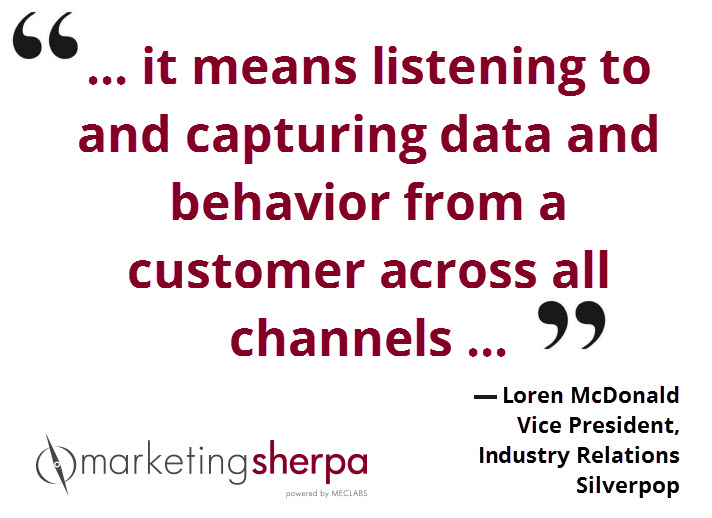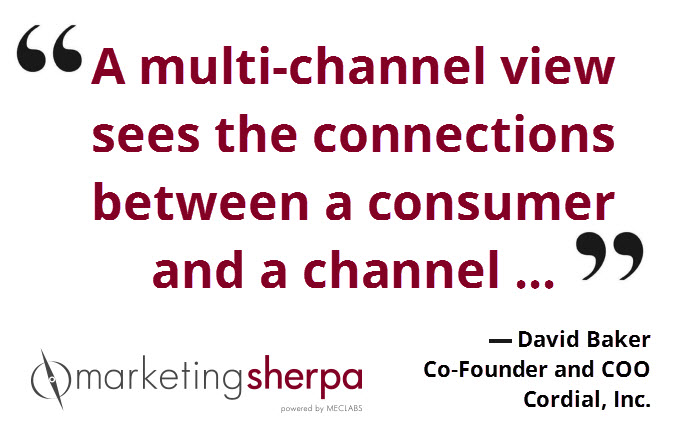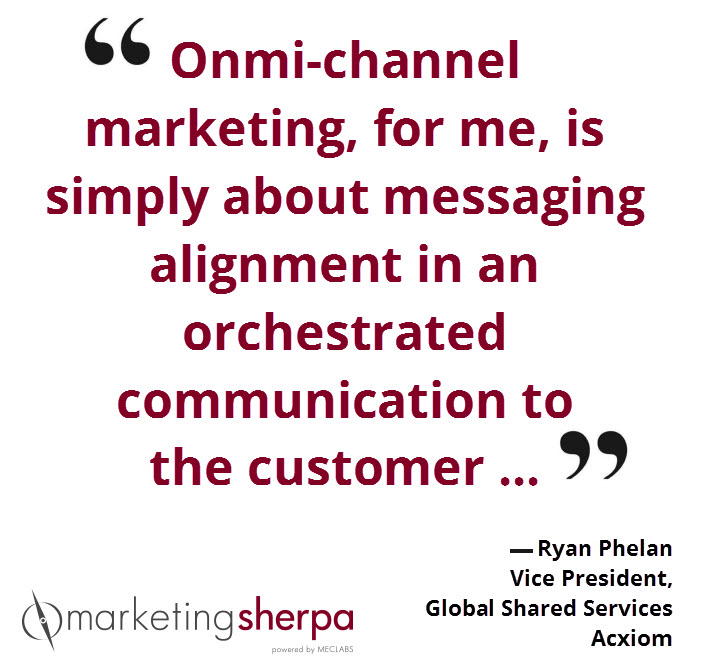Omni-channel Marketing: How do you define the term?
Marketing, like any business area, is full of acronyms (CRM, SEO, SEM, etc.) and buzzwords that get hot and start being used in conversations, presentations, industry articles and other professional interactions. I can think of more than a few, and I bet you can too (in fact, it would be fun for everyone to share some of your favorite marketing buzzwords in the comments section of this post.)
One of the latest buzzwords out there is “omni-channel marketing” — a term that obviously is related, but different from multi-channel marketing. However, like any new term or phrase that begins receiving a lot of traction, there is no clear definition on exactly what omni-channel marketing means or entails.
With that in mind, I reached out to a group of marketing industry thought leaders who, by job title and description, are tasked with staying in front of industry trends.
Here are different takes on omni-channel marketing from three industry experts:
Loren McDonald, Vice President Industry Relations, Silverpop, an IBM company
“Omni-channel to me means that, first, a brand or company understands that its customers interact with them in multiple and different  channels along their customer journey and is organized around that customer experience and journey, rather than individual channels. Then from an execution perspective, it means listening to and capturing data and behavior from a customer across all channels and then responding back through the channel, or channels, that best moves that individual customer on to the next stage of the journey.
channels along their customer journey and is organized around that customer experience and journey, rather than individual channels. Then from an execution perspective, it means listening to and capturing data and behavior from a customer across all channels and then responding back through the channel, or channels, that best moves that individual customer on to the next stage of the journey.
“Unlike a simple multi-channel approach, omni-channel means that the brand’s messages are both coordinated and provide a consistent experience for the customer across channels and devices. For example, a customer that browses your site or abandons your shopping cart might receive a push notification promoting the product viewed when they log in to your mobile app a few days later.”
David Baker, Co-Founder and Chief Operating Officer, Cordial, Inc.
“The fundamental shift in multi-channel vs. omni-channel thinking is a product of a maturing view of the consumer by marketers. Think consumer at the center, wrapped by a connected experience vs. the consumer connecting with each channel discretely in a very linear way.
“A multi-channel view sees the connections between a consumer and a channel, and forces you to operate in a disparate manner, often leading to blind spots based on the maturity of the channels you operate (Ex. search, site, email, display, social, POS, in store).
 “Whereby omni-channel sees the interrelationship between the consumer and all channels at given points in time and forces marketers, regardless of the maturity of their channels to look at the interconnection between channels and consumer experience. As eBay CEO John Donahoe said when asked about the threat of F-Commerce (Facebook commerce), ‘In the eyes of the consumer, ecommerce and retail are now one — just shopping.’
“Whereby omni-channel sees the interrelationship between the consumer and all channels at given points in time and forces marketers, regardless of the maturity of their channels to look at the interconnection between channels and consumer experience. As eBay CEO John Donahoe said when asked about the threat of F-Commerce (Facebook commerce), ‘In the eyes of the consumer, ecommerce and retail are now one — just shopping.’
“I believe this buzzword, ‘omni-channel,’ is simply a method to help the industry shift this thinking and a way to rationalize how you align digital media thinking, audience management and data management platforms with the biggest buzzword of them all — big data — and build strategies connecting media and PII driven channels (Ex. site, email, mobile).
“It forces a marketer to put a premium on consumer data, not just for the pure goal of optimizing performance proxies in channel, rather a longer term view of creating sustainable value for the company. The Internet of Things, I believe, will morph this thinking even further, as there will be a myriad of relevant signals from disparate devices (Ex. Smart Home, Smart Car, Smart You — wearables etc.), yet again with the consumer at the center and little discretion as to the channel.”
Ryan Phelan, Vice President Global Shared Services, Acxiom
“It’s amazing to me how this term (and others) get so confused based on who you talk to and where you are. Omni-channel marketing, for me, is simply about messaging alignment in an orchestrated communication to the consumer which uses all available information to create an informed and relevant relationship with the consumer.
“It’s the approach that looks at email, mobile, social, beacons, print, customer service and other emerging technologies to inform a marketing message that resonates with the consumer. What it is not, is what many believe, which is a coordinated campaign from the creative or voice.
“We all know that (for example) a direct mail piece looks horrible if directly applied to an email. It just does not work, and it’s because the channel changes. In omni-channel marketing, we look at the overarching message and apply it to the marketing channel using a wealth of data that exceeds the channel.
“But don’t ignore the challenges. From training staff to recognize opportunities for capturing insight, understanding the technologies that consumers use, vendor support for innovation and being able to explain simply the goal takes a lot of effort. Add to that the attribution challenges that dominate companies, and omni-channel marketing is not just a buzzword but a complete and total rebuild about how we think about marketing.
“Omni-channel marketing is about a message everywhere, based on everything I know orchestrated to the channel.”
You just read three different — similar, but different — takes on omni-channel marketing. How do you define the term?
You can follow David Kirkpatrick, Reporter, MECLABS Institute on Twitter @davidonline.
You might also like
Ecommerce: Going beyond omnichannel for creative customer experiences [More from the blogs]
Ecommerce: Blurring the lines between online and offline experiences [More from the blogs]
Omnichannel Marketing: Optimizing digital content efforts to maximize growth in ecommerce [MarketingSherpa webinar archive]
Multichannel vs. Omnichannel Marketing: Is There a Difference, and What Does It Mean to You? [via EContent Mag]
Categories: Marketing multi-channel marketing, omni-channel marketing










Omni-channel marketing is the next big thing that all small businesses should begin to consider. Not all customers utilize the same method of communication.